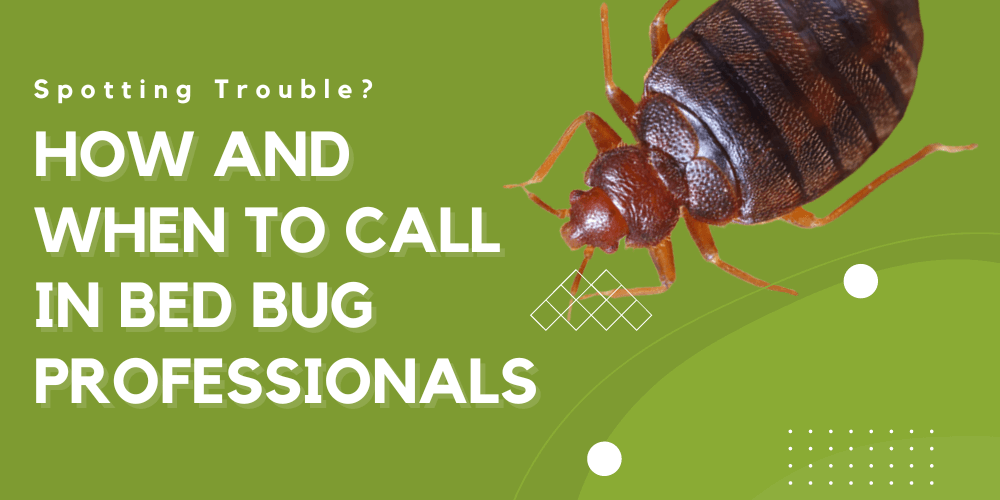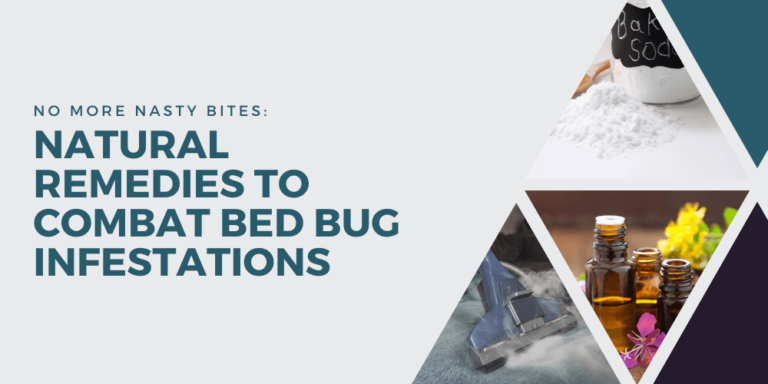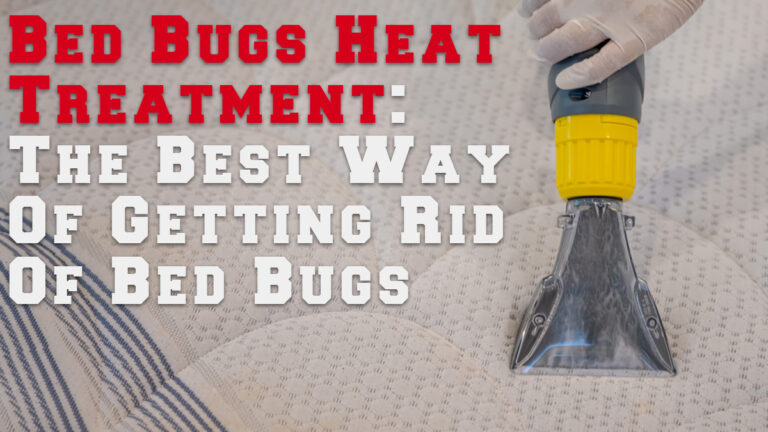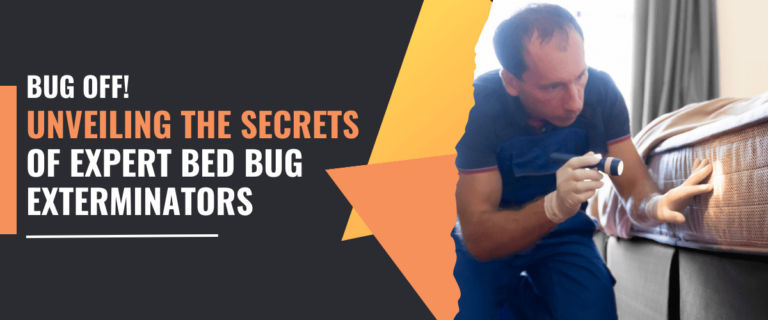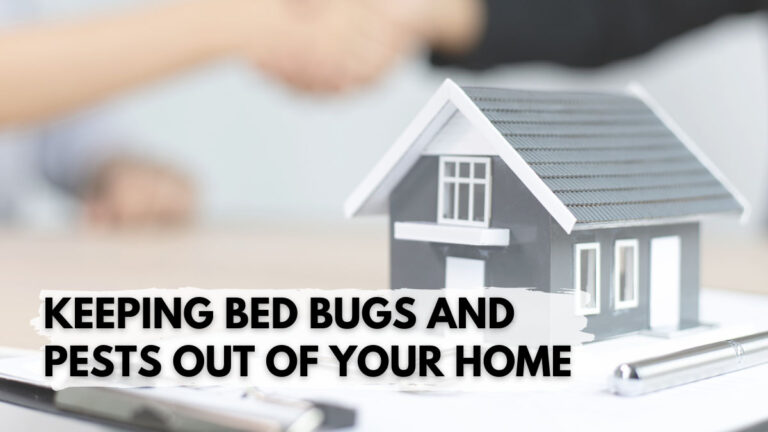Spotting Trouble? How and When to Call in Bed Bug Professionals
How often do you wake up in the morning feeling groggy and grumpy, only to find mysterious bites scattered across your body? If you’re scratching your head trying to figure out the cause, we might have the answer: bed bugs! These are tiny insects that pose significant challenges in residential spaces. They can quickly infest homes and cause discomfort, stress, and even health issues for residents.
Moreover, early detection is crucial to prevent a minor infestation from becoming a nightmare. This article focuses on recognizing the critical signs of a potential bed bug problem and knowing when to call in professionals for assistance.
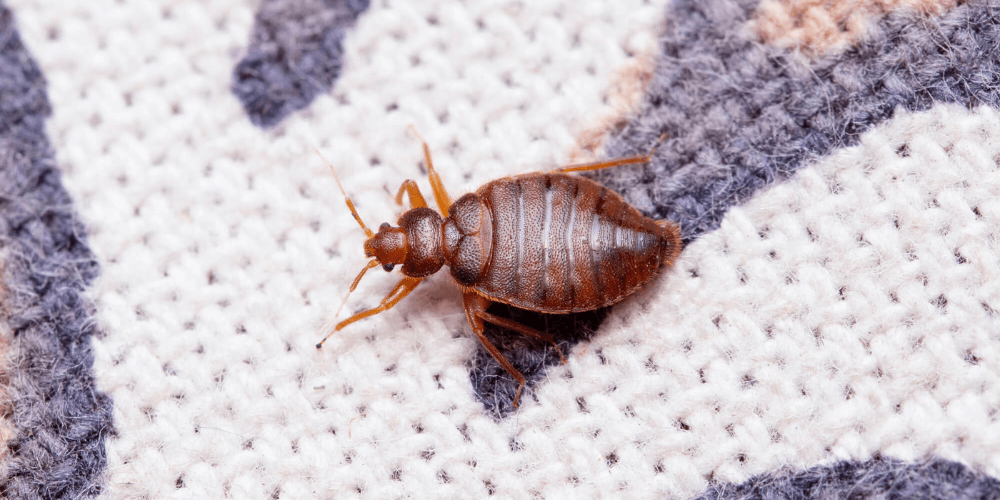
Understanding Bed Bugs
Bed bugs are tiny, reddish-brown creatures that sustain themselves by feeding on the blood of both humans and animals. They are primarily nocturnal and hide in cracks, crevices, and furniture during the day. Bed bugs are a concern in residential and commercial settings due to the following reasons:
- Discomfort from bites and disturbed sleep
- Health risks of secondary infections and allergic reactions
- Challenges in eradication and resilience
- Reputation damage and financial losses
- Psychological distress and social stigma associated with infestations.
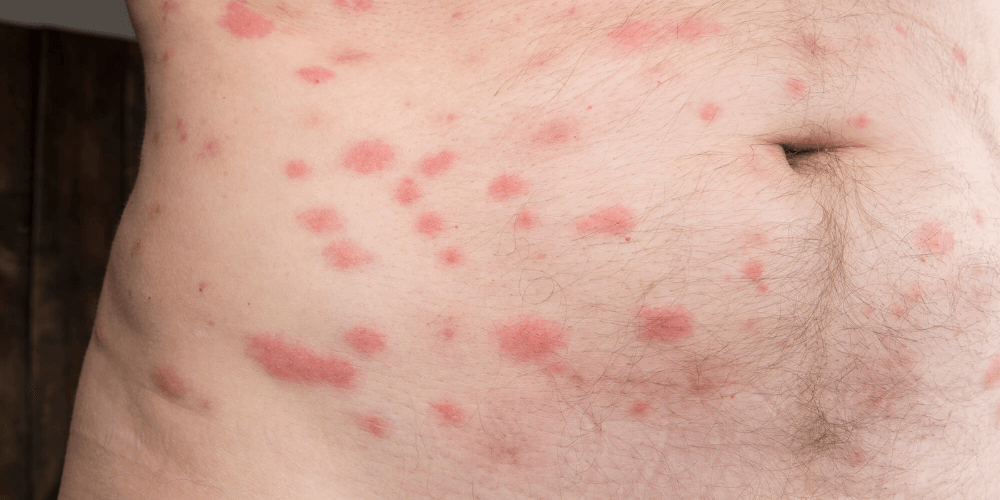
Sign 1: Visible Bed Bug Bites
Bed bug bites frequently manifest as groups or rows of bites that cause itching and redness. Bites from other insects, including fleas or mosquitoes, are commonly confused with bed bug bites.
The following are the differences between bed bug bites and other insect bites:
- Bed bug bites are usually clustered or linear, while other insect bites may be more scattered.
- Bed bug bites are typically itchy but not painful, whereas other insect bites may cause pain or a burning sensation.
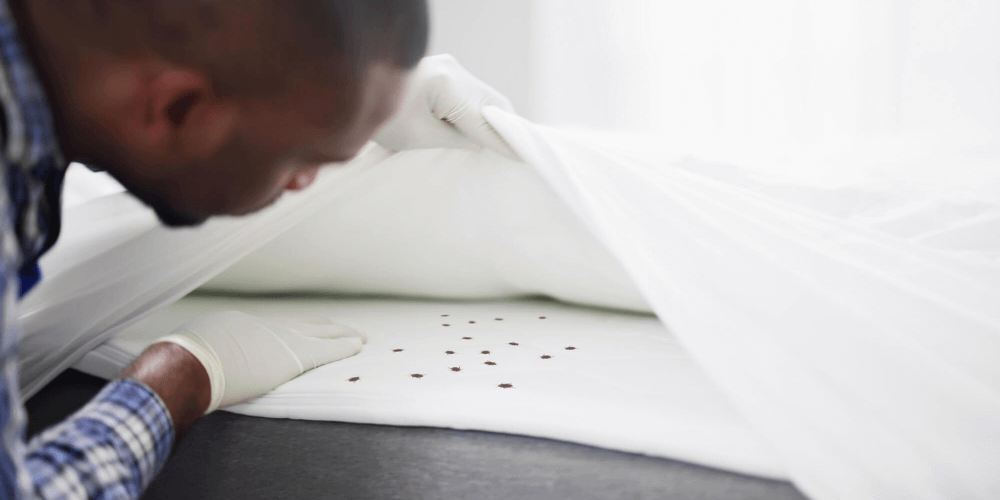
Sign 2: Actual Sightings of Bed Bugs
Bed bugs are small, flat, oval-shaped insects that are reddish-brown. Bed bugs commonly infest mattresses, box springs, headboards, and cracks and crevices near beds.
Here are tips to spot live bed bugs or their shed skins:
- Inspect seams, folds, and crevices of bedding.
- Check the furniture near the bed.
- Look for bugs or shed skins in cracks and crevices.
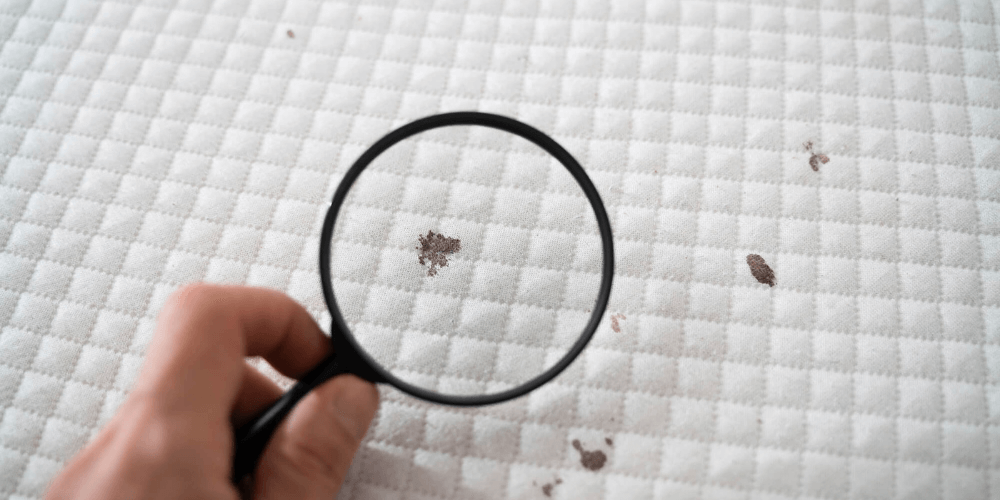
Sign 3: Unexplained Blood Stains
Bed bugs may cause blood stains on sheets or mattresses when they accidentally crush while feeding. The blood stains are typically small and dark; people may find them in clusters.
The following are tips for inspecting bedding and upholstered furniture:
- Check mattress seams and corners.
- Search for stains that are small and dark.
- Examine upholstered furniture.
- Inspect pillowcases and covers.
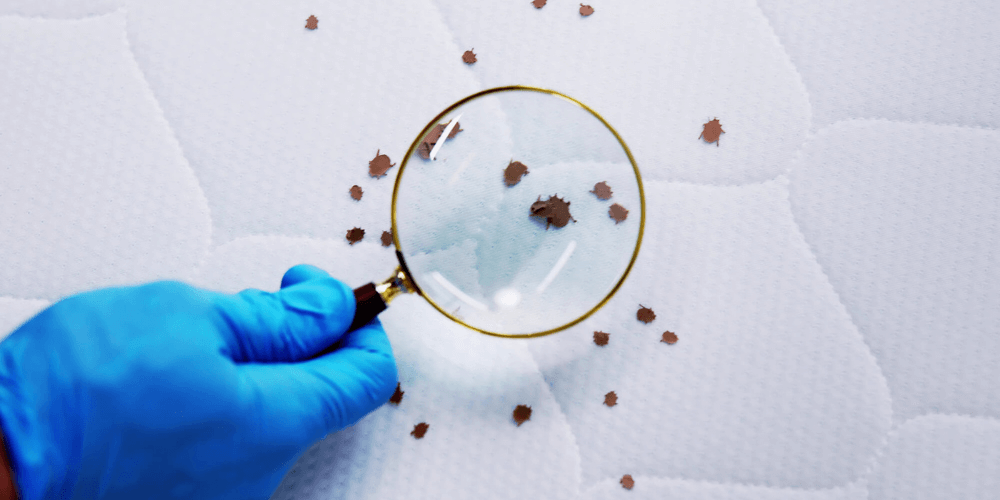
Sign 4: Fecal Marks and Musty Odors
Bed bug fecal spots appear as tiny, dark stains on surfaces such as bedding, mattresses, and furniture. You can typically find these spots where bed bugs hide or travel. Additionally, a musty odor is often present in heavily infested areas due to the scent glands of bed bugs releasing pheromones.
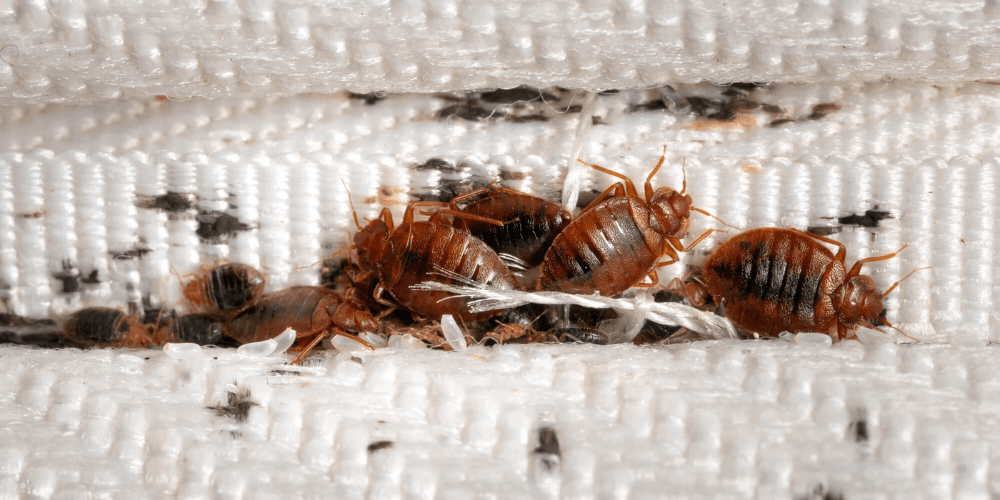
Sign 5: Eggs and Eggshells
Bed bug eggs and eggshells are tiny and translucent white. Bed bugs measure about 1mm in size and can hide in spots such as mattress seams, cracks in furniture, or behind wallpaper. Additionally, recognizing these signs can help confirm the presence of bed bugs and assist in taking appropriate measures for eradication.
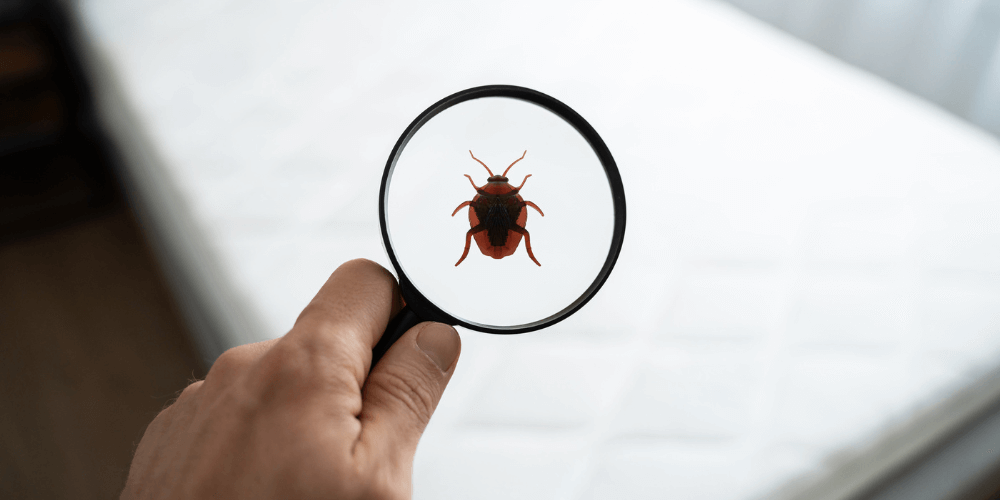
Conducting a Bed Bug Inspection
Are you looking to ensure a bedbug-free environment in your home? The following are the crucial steps to follow for a thorough bed bug inspection:
- Inspect the bedroom and expand to other areas.
- Check mattress seams, bed frames, headboards, and footboards.
- Examine cracks in furniture, baseboards, and electrical outlets.
- Look behind wallpapers and peeling paint for signs of bed bugs.
Furthermore, regular checks, especially in high-risk areas like bedrooms and living rooms, are essential to promptly identify bed bug infestations and prevent their spread throughout the home.

When to Call the Professionals
Knowing when to call in the professionals is essential when dealing with bed bug infestations. These are the scenarios and levels of infestation that require expert intervention, such as:
- When bed bugs have spread to multiple rooms or areas in the house.
- Persistent infestations despite DIY attempts.
- When DIY solutions have not effectively eliminated the bed bugs.
- High-risk situations, such as health conditions or sensitive individuals.
The following are the advantages of professional bed bug eradication methods over DIY solutions:
- Specialized equipment and expertise.
- Thorough identification of infestation areas.
- Targeted treatments for effective eradication.
- Follow-up inspections for assurance.
- Advice on preventive measures.

Choosing the Right Bed Bug Professionals
When addressing a bed bug problem, selecting an exemplary professional extermination service is crucial. When deciding on a trustworthy and efficient professional to handle bed bugs, it is essential to contact professionals for bed bug signs in Texas and take these critical factors into account:
- Conduct thorough research on multiple providers and ask for recommendations.
- Inquire about their experience and expertise in bed bug removal.
- Look for relevant pest control licenses and certifications.
- Check for specific qualifications in bed bug removal.
- Assess the level of satisfaction and effectiveness of the bed bug professional by reviewing customer testimonials and reviews.

Preparation for Professional Treatment
Proper preparation ensures better access for exterminators and increases the chances of eliminating all bed bugs, leading to a more successful treatment outcome. Follow these instructions to ensure proper preparation, which may include:
- Remove clutter and personal items from the infested areas.
- Launder-infested clothing, linens, and fabrics in hot water.
- Vacuum and steam clean furniture, mattresses, and carpets.
- Seal cracks and crevices to limit bed bug hiding spots.
- Inform the extermination service about any sensitive items that need special attention.
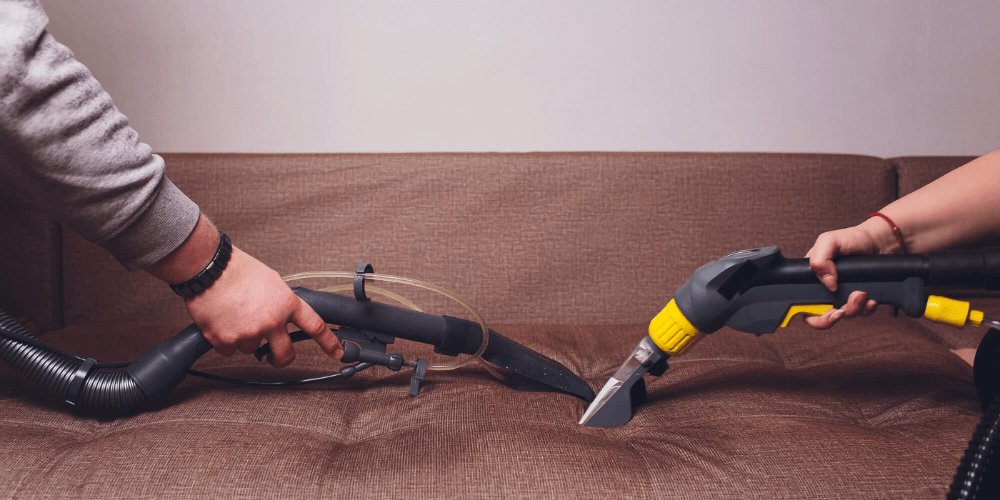
Preventing Future Infestations
Taking proactive steps to prevent future infestations is essential for maintaining a bed bug-free environment. These effective preventive measures can significantly reduce the risk of bed bug presence in your home, which includes:
- Regularly vacuum and clean their home, especially bedding and furniture.
- Seal cracks and crevices to eliminate potential bed bug hiding spots.
- Use mattress covers to protect against infestations.
- Be cautious with second-hand furniture and clothing.
- Maintain a clutter-free living environment.
Additionally, ongoing vigilance and regular inspections are essential to promptly recognize and handle any indications of bed bugs for effective prevention.

Bug Out Bed Bugs – Bring in the Experts!
To conclude, knowing the critical signs of bed bug infestations, such as bites, bloodstains, and fecal spots, is essential. Timely professional intervention is vital to prevent the infestation from spreading and causing further inconvenience.
Furthermore, stay informed, be proactive, and regularly inspect your homes to deal effectively with any bed bug issues that may arise. You can create a comfortable environment free from pests by staying vigilant and taking necessary precautions!
References:
- Step 2: Decide whether to call a professional – Bed Bug Foundation. (2021, February 17). Retrieved from https://www.bedbugfoundation.org/self-help/step-2/
- Hiring a pest management professional for bed bugs | US EPA. (2023, August 21). Retrieved from https://www.epa.gov/bedbugs/hiring-pest-management-professional-bed-bugs
- Newman, T. (2018, February 13). Everything you need to know about bedbugs. Retrieved from https://www.medicalnewstoday.com/articles/158065#_noHeaderPrefixedContent

